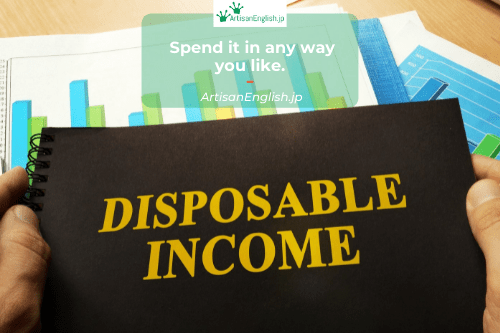
YouTube / iTunes / Spotify / Radio Public / Pocket Casts / Google Podcasts / Breaker / Overcast
Listen to ArtisanEnglish.jp posts & lesson intros here.
WotD: Disposable income
On Thursday, in the first post of the week, we looked at the word shrinkflation, which occurs when companies shrink product sizes instead of increasing the price.
Today we will examine and explain disposable income.
Most people earn income from investments, jobs or in other ways.
After paying your taxes and all of your basic needs, the money you have left is your disposable income. It’s money you spend how you like.
That means they also pay taxes.
In addition to taxes, there are also basic needs such as food, rent, transportation, internet service etc.
After paying your taxes and all of the other things mentioned above, whatever you have left is your disposable income.
It’s the money you use for entertainment, recreation and other items such as designer clothing and holidays.
You have to pay taxes and spend money on basic needs, but your disposable income is money you spend in any way you like.
Yes, if you want, you can even save it or put it into some form of investment instrument.
You may have heard that prices are beginning to rise dramatically.
When prices rise, all the basics, such as food, rent, and gasoline, for example, become more expensive.
This increase in cost then directly impacts the amount of disposable income you have; it becomes less.
The smaller the amount of disposable income you have, the fewer times you eat out at restaurants, the more economical vacations you choose, and the longer you consider before purchasing unessential items.
Inflation is a disposable income killer and, thus, an economy killer.
Disposable income is the lubricant that makes the economy operate smoothly and grow.
It’s one of the reasons why Japan, the US and Britain are so worried about rising energy prices.
The more we pay for fuel, the less we spend on things we want instead of need.
Flesch-Kincaid Readability Test
This post is understandable by someone with at least an 8th-grade education (age 13 – 14).
On the Flesch-Kincaid reading-ease test, this post scores 62.
The easier a passage is to read, the higher the score on a scale of 0 – 100.

